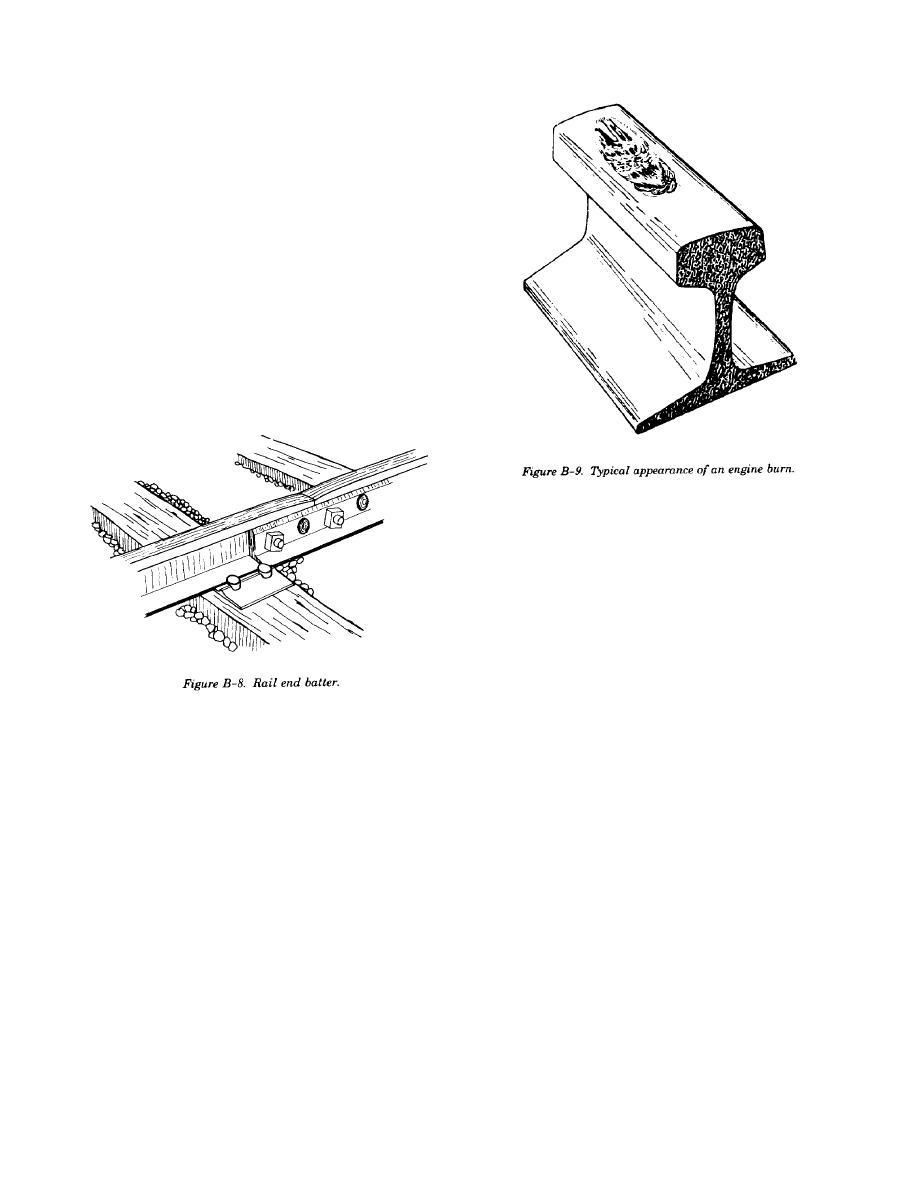
TM 5-628/AFR 91-44
h. Defective weld.
(1) Description. A progressive transverse
separation within an area where two rails have been
joined by welding or a rupture at a weld where im-
proper fusion has occurred.
(2) Appearance in track. No outward sign
is visible until the separation reaches the rail sur-
face. A defective weld may then be recognized by
a vertical bleeding crack at the welded portion of
the rail joint where the separation has reached the
surface.
j. End batter.
(1) Description. Damage caused by wheels
striking the rail ends.
(2) Appearance in track. Appears as
damage to or a depression in the top surface of the
rail head at the ends of the rail (fig B-8).
l. Engine burn fracture.
(1) Description. A progressive fracture in
the rail head starting from a point where engine
wheels have slipped and burned the rail.
(2) Appearance in track. No sign of
transverse separation is visible until the defect
reaches the rail surface (cracks out). An engine
burn fracture may then be recognized by one or
more of the following characteristics.
(a) A hairline crack on the side of the
head in the immediate vicinity of an engine burn
and at right angles to the running surface. The
k. Engine burns (burned rail).
crack may be visible on either the field or gage side
(1) Description. Rail that has been scarred
of the head.
(b) Transverse thermal cracks extending
on the running surface by the friction of slipping
locomotive wheels. An engine burn is not a critical
from the burn to the gage corner and down the side
of the head for at least c (0.125) inch.
defect; however, an engine burn may lead to an
(c) A cracked out horizontal separation on
engine burn fracture.
(2) Appearance in track. Round or oval
the field side of the rail head under the burned area
rough spots or holes on the tread of the running
often accompanied by one or more thermal cracks
surface. Often the source of engine burn fractures.
extending transversely to the gage corner (fig B-10).
Engine burns may be deep (fig B-9).
B-4


 Previous Page
Previous Page
